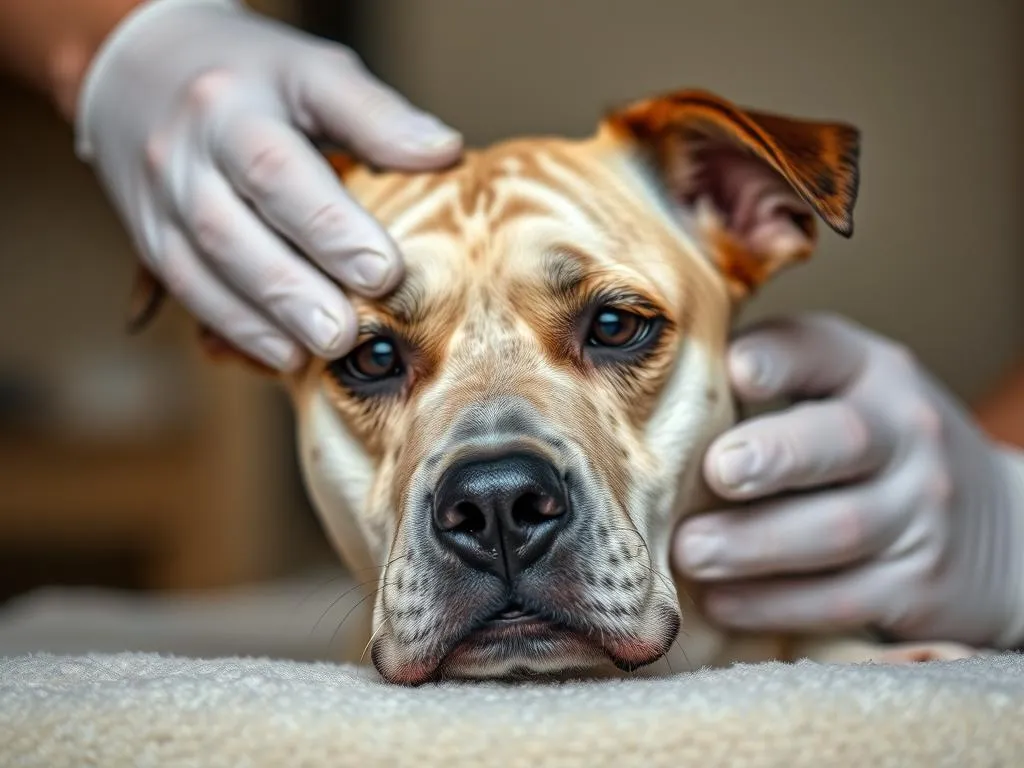
Introduction
Dog health care is a crucial aspect of pet ownership that encompasses various elements to ensure the well-being of our furry friends. Among the numerous health issues that dogs face, dog anxiety treatment has gained significant attention due to its prevalence and impact on overall health. Anxiety in dogs can manifest in various forms, affecting their behavior, emotional state, and physical health. Addressing this issue is vital not only for the dog’s happiness but also for the owner’s peace of mind.
Understanding and treating dog anxiety is essential, as it can lead to more severe behavioral problems if left unaddressed. This article delves into the intricacies of dog anxiety, including its causes, symptoms, and a range of effective treatment options. By the end, you will have a comprehensive understanding of how to manage anxiety in your dog, ensuring their well-being and happiness.
Understanding Dog Anxiety
Definition of Dog Anxiety
Dog anxiety refers to a state of distress or fear that can significantly alter a dog’s behavior and emotional state. While it’s normal for dogs to experience mild stress or fear in certain situations, such as meeting new people or visiting the vet, anxiety disorders are characterized by excessive and prolonged reactions. This can lead to behaviors that are not typical for the dog, such as destructive actions, excessive barking, or withdrawal.
Differentiating between normal behavior and anxiety disorders is critical. A dog that occasionally barks at strangers may not necessarily be anxious; however, a dog that barks incessantly, hides, or shows signs of distress when faced with similar situations may be suffering from an anxiety disorder.
Common Causes of Dog Anxiety
Understanding the root causes of dog anxiety is vital for effective dog anxiety treatment. Several factors can contribute to anxiety in dogs:
-
Genetic Predispositions: Some breeds are more susceptible to anxiety disorders than others. For instance, breeds like Border Collies and German Shepherds may demonstrate higher levels of anxiety due to their temperament and energy levels.
-
Environmental Factors: Changes in routine, such as moving to a new home or the arrival of a new family member, can trigger anxiety. Dogs thrive on routine, and disruptions can lead to stress.
-
Traumatic Experiences: Abuse, abandonment, or any traumatic experience can have lasting effects on a dog’s mental health, leading to anxiety that manifests in different situations.
-
Medical Issues: Certain medical conditions can contribute to anxiety. Chronic pain or illnesses can lead to discomfort, which may manifest as anxiety.
Symptoms of Dog Anxiety
Recognizing the signs of anxiety in dogs is crucial for timely intervention. Symptoms can vary widely and may include:
-
Behavioral Signs: Excessive barking, destructive behavior, and escaping attempts are common indicators. Dogs may also exhibit signs of aggression or fear-based behaviors, such as growling or snapping.
-
Physical Symptoms: Panting, trembling, and excessive drooling can signal anxiety. Dogs may also show signs of gastrointestinal distress, such as diarrhea or vomiting.
-
Emotional Signs: Withdrawal, clinginess, and changes in appetite can indicate anxiety. An anxious dog may seek comfort from their owner or isolate themselves from the family.
Types of Dog Anxiety
Separation Anxiety
Separation anxiety is a condition where dogs become distressed when left alone. This type often leads to destructive behaviors, such as chewing furniture or excessive barking. Signs to watch for include:
- Vocalization when left alone
- Destructive behavior
- Attempts to escape
- Excessive greeting or clinginess when the owner returns
Noise Anxiety
Noise anxiety is triggered by loud sounds, such as thunderstorms, fireworks, or even household noises like vacuum cleaners. Symptoms may include:
- Hiding or seeking shelter
- Trembling or panting
- Excessive barking or whining
Social Anxiety
Social anxiety manifests as fear of unfamiliar people or dogs. This can lead to avoidance behaviors or aggression. Signs include:
- Cowering or hiding when approached
- Aggressive barking or lunging
- Reluctance to engage in social situations
Travel Anxiety
Some dogs experience anxiety during car rides or trips. Signs of travel-related anxiety include:
- Excessive drooling or panting
- Whining or barking
- Attempts to escape the vehicle
Diagnosing Dog Anxiety
Professional Evaluation
Consulting a veterinarian or a canine behaviorist is essential for a proper evaluation. Professionals can conduct behavioral assessments and may use diagnostic tools to determine the type and severity of anxiety. A thorough evaluation will help to rule out any underlying medical issues that may contribute to the dog’s anxiety.
Owner Observations
As a dog owner, keeping a detailed journal of your dog’s behaviors and triggers can aid in the diagnosis process. Note when and where anxiety symptoms occur, as well as any environmental changes. Consistency in your observations can provide valuable insights to the professionals you consult.
Treatment Options for Dog Anxiety
Behavioral Therapy
Behavioral therapy is a cornerstone of effective dog anxiety treatment. This includes:
-
Positive Reinforcement Training: Rewarding calm behavior with treats or praise can help reinforce positive associations with previously anxiety-inducing situations.
-
Desensitization and Counter-Conditioning: Gradually exposing dogs to anxiety triggers in a controlled manner helps them build tolerance over time. This method involves pairing the trigger with positive experiences, such as treats or playtime.
-
Working with a Professional Trainer: A certified trainer can help develop a tailored behavior modification plan suited to your dog’s specific needs.
Medication
In some cases, medication may be necessary to manage anxiety symptoms effectively. Common types of medications include:
-
SSRIs (Selective Serotonin Reuptake Inhibitors): These can help regulate mood and reduce anxiety levels.
-
Anti-Anxiety Medications: These are often prescribed for short-term relief during particularly stressful situations.
It’s important to discuss potential side effects and considerations with your veterinarian before starting any medication.
Natural Remedies and Supplements
Many dog owners seek natural remedies for anxiety. Some popular options include:
-
Calming Supplements: Products containing ingredients like CBD oil, L-theanine, or valerian root may help relax anxious dogs.
-
Pheromone Diffusers: These products release calming pheromones that can help ease anxiety in dogs.
-
Calming Music: Playing soothing music can create a tranquil environment, helping to alleviate anxiety.
While natural remedies can be beneficial, it’s essential to consult with a veterinarian to ensure the safety and efficacy of any treatments.
Environmental Modifications
Creating a supportive environment can significantly help anxious dogs. Consider these modifications:
-
Safe Space: Designate a quiet area where your dog can retreat when feeling anxious. This space should be comfortable and free from disturbances.
-
Routine and Structure: Maintaining a consistent daily routine helps dogs feel secure. Regular feeding, exercise, and playtime can reduce anxiety levels.
-
Anxiety Wraps or Calming Coats: These products provide gentle pressure that can help soothe anxious dogs, similar to swaddling a baby.
Preventing Dog Anxiety
Early Socialization
Early socialization is crucial in preventing anxiety. Exposing puppies to various environments, people, and stimuli helps them develop confidence. Positive experiences during this critical period can reduce the likelihood of anxiety later in life.
Consistent Routine
A predictable schedule can significantly reduce anxiety in dogs. Establishing consistent feeding, exercise, and playtime routines helps create a sense of security. Tips for maintaining consistency include:
- Feeding at the same times each day
- Regularly scheduled walks and play sessions
- Consistent training and interaction times
Positive Reinforcement Strategies
Reinforcing calm behavior through positive reinforcement is vital in managing anxiety triggers. Using treats and praise when your dog remains calm in potentially stressful situations can help build their confidence and reduce anxiety over time.
Conclusion
Addressing dog anxiety treatment is essential for the overall health and well-being of your furry friend. By understanding the causes and symptoms of anxiety, you can take proactive steps to manage and treat it effectively. Whether through behavioral therapy, medication, or environmental modifications, numerous options are available to help your dog feel secure and happy.
If you notice signs of anxiety in your dog, seeking professional help is paramount. With comprehensive dog health care, you can ensure your pet leads a fulfilling life free from the burdens of anxiety. Ultimately, understanding and addressing anxiety not only benefits your dog but enhances the bond between you and your beloved companion.









